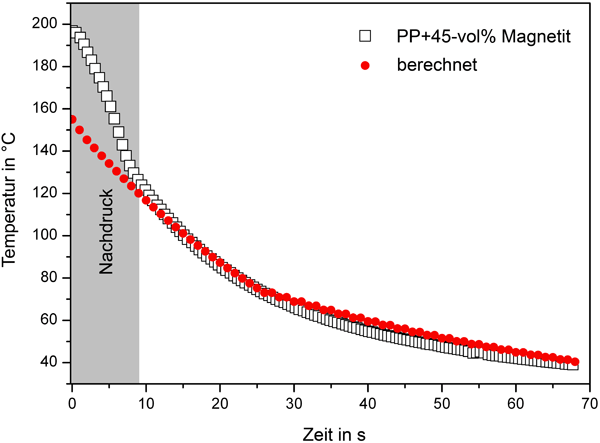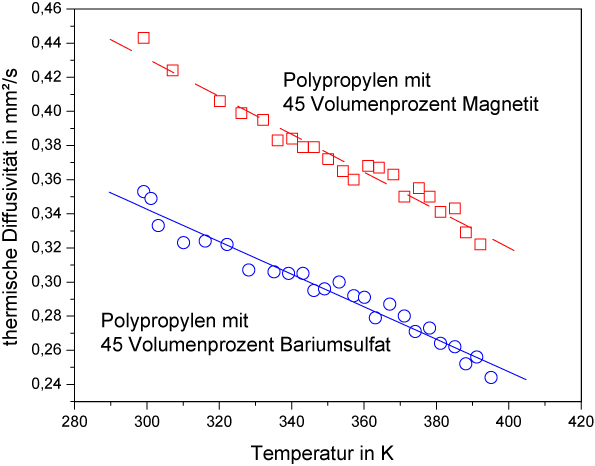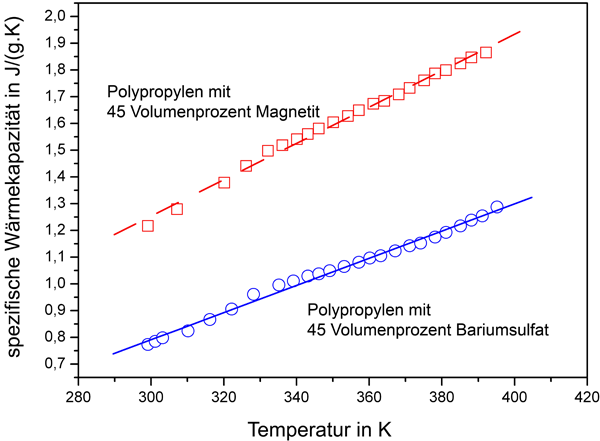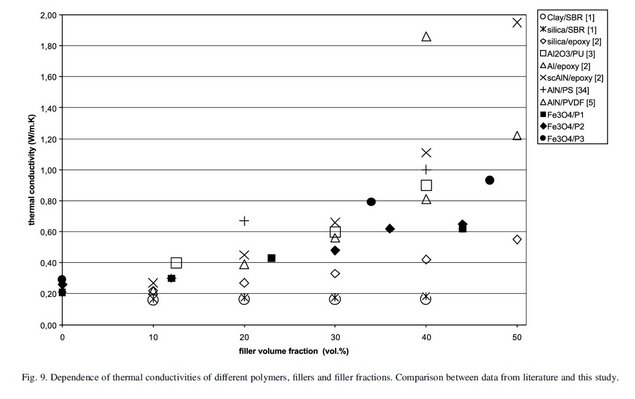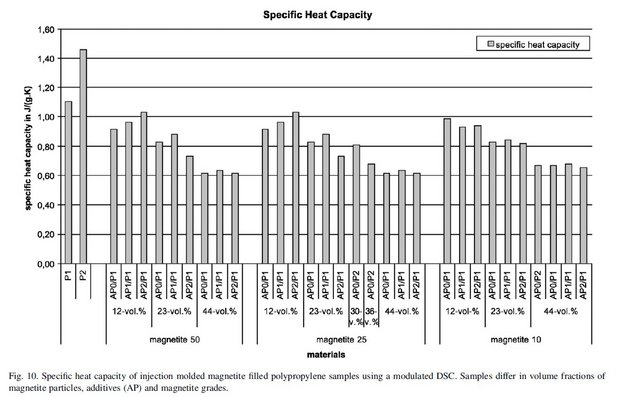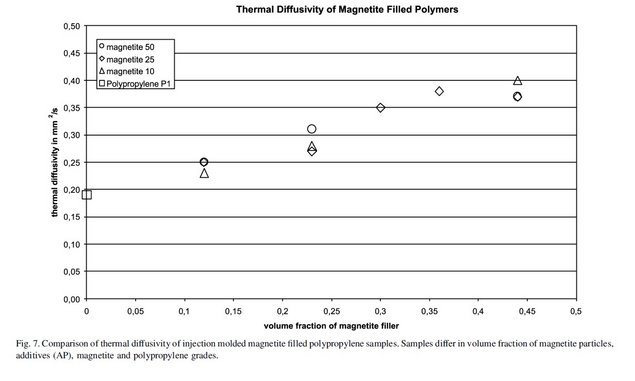Thermal properties and cooling behavior of materials using the example of polypropylene composites with different particle contents in an injection mold
Compared to metals, plastics are very poor heat conductors. However, their thermal conductivity can be significantly increased by adding suitable additives, usually metal or metal oxide particles. These composite materials can still be processed using typical plastics machinery, which makes them interesting for many applications in which heat needs to be dissipated. Typical areas of application include heat sinks for power electronics, coil sheathing, plain bearings, automotive engineering (e.g. heat dissipation from the armature board) and much more. Knowing the thermal conductivity of a material also helps to calculate the minimum cooling time of a material in the injection molding tool after which it can be demolded.
If the thermal conductivity of the composite material is to be isotropic, the particles used must have a low aspect ratio; they are therefore spherical or irregularly shaped. The higher the aspect ratio of the particles, the more anisotropic the thermal conductivity. High aspect ratios are found in fibers. Of course, even with spherical particles, the manufacturing process often results in a certain degree of anisotropy in the particle distribution, which can lead to anisotropic thermal conductivity. This occurs, for example, in the injection molding process.
Nevertheless, the increased thermal conductivity of plastic compounds made of polymer and particles still offers a considerable advantage in the injection molding process:
The higher the thermal conductivity of the polymer, the faster the injection molding compound cools down in the mold and the faster the injection molding cycle.
The figure above shows the temperature curves measured over time in an injection mold during the cooling of polypropylene-magnetite composites.
The less magnetite is present in the compound, the higher the temperature of the compound after a given cooling time after the injection time t=0. It is therefore clear that the higher the proportion of magnetite in the compound, the faster the material cools in the mold. This is due to the fact that the thermal conductivity of the material increases with increasing magnetite content. One way of measuring the thermal conductivity of materials is the laser flash method.
The thermal conductivity can be influenced not only by the amount of material added but also by the material itself. The figure below shows the change in the cooling behavior of polypropylene in the injection mold for a volume content of 30% in each case for the material admixtures magnetite, barium sulfate, glass fiber, talc, strontium ferrite and copper.
The figure clearly shows that the addition of copper, which has an extremely high thermal conductivity, causes the composite to cool down particularly quickly in the mold. The other materials examined do not appear to show any particularly large differences in cooling behavior. However, this is due to the plot on a logarithmic scale, which does not make the differences clear.
Plotting on a logarithmic scale is appropriate because the slope of the cooling curve should theoretically give the thermal conductivity of the material. This result is obtained by solving the one-dimensional heat conduction equation with the aid of many simplifications (see publications). Despite these simplifications, the measured experimental temperature curve can be calculated quite well with this simple model, as can be seen in the following figure.
However, the simplification is also made here that the thermal conductivity is independent of the temperature and therefore does not change during the cooling process. However, this does not actually correspond to the physical conditions. The next image shows how the thermal conductivity of two selected polypropylene composites changes with temperature.
The figure shows that the thermal conductivities (diffusivities) of a polypropylene-magnetite and a polypropylene-barium sulphate particle composite material decrease with increasing temperature. It can also be seen that the thermal conductivity of the magnetite-filled polypropylene is higher than that of the polypropylene filled with barium sulphate over the entire temperature range investigated.
Using the thermal conductivity α, the thermal conductivity λ can be calculated using the formula λ = ρ * α * cp, where cp describes the specific heat capacity. The specific heat capacity was therefore determined using DSC measurements in the same temperature interval as in the figure above. The figure below shows that the specific heat capacities of the two polypropylene composites increase in the measured temperature range.



